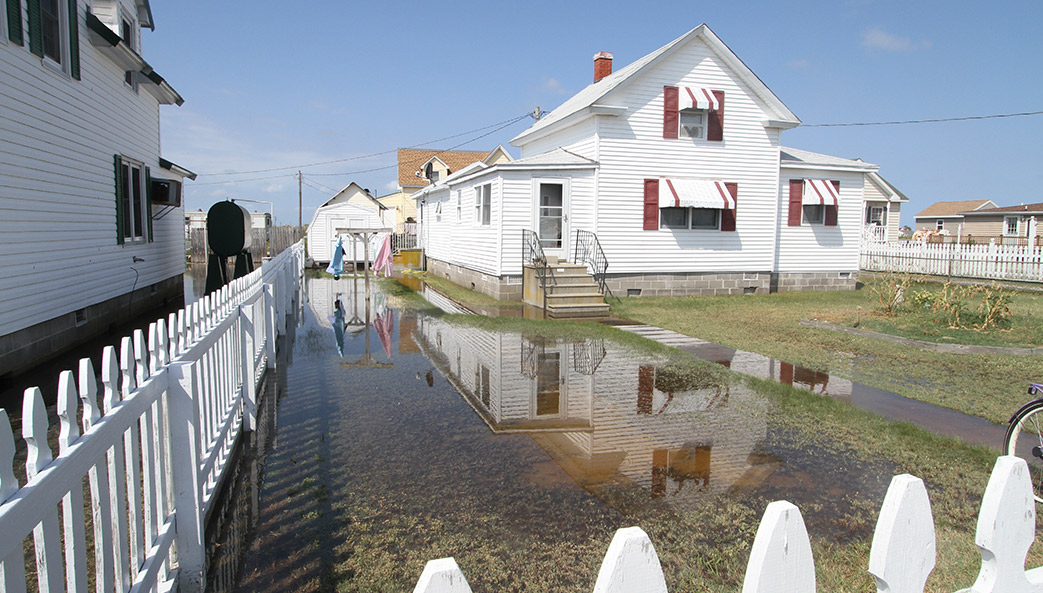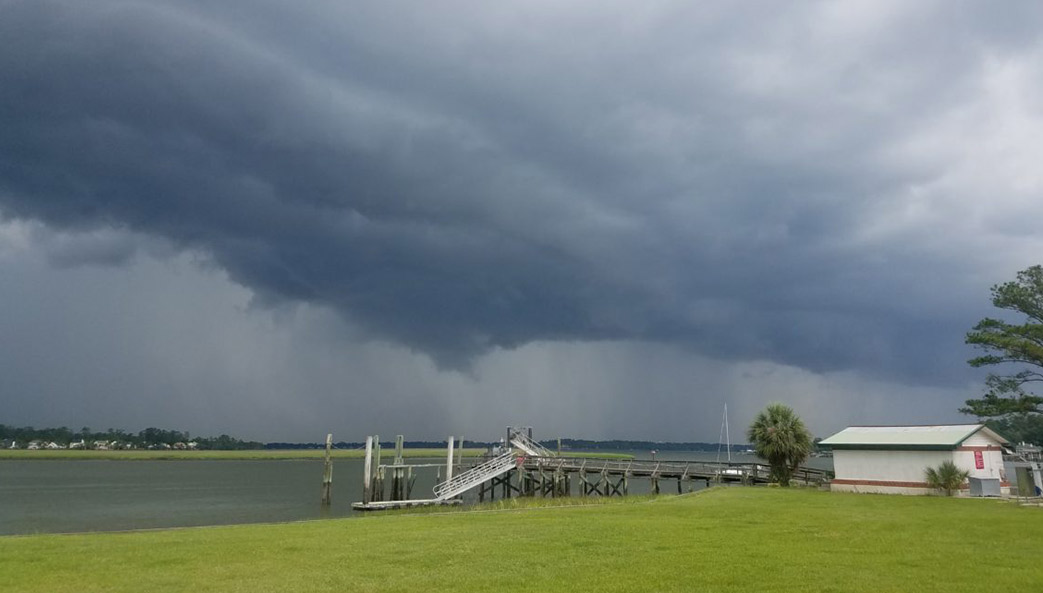In June, the one-square-mile-plus bit of Virginia known as Tangier Island gained national attention when President Donald Trump called the town’s mayor, James “Ooker” Eskridge, with a message of reassurance. The phone call followed a CNN report that Tangier Island—and the homes of about 450 inhabitants—likely would be swallowed by the Chesapeake Bay within two decades.
The president told Eskridge “not to worry about sea-level rise,” according to a CNN follow-up story, but residents are worried, and with good reason. The island has lost two-thirds of its landmass since 1850, according to research published in the online journal Scientific Reports in 2015, and continues to lose about 15 feet of coastline every year.
Tangier Island residents won’t be the first U.S. refugees forced off their land by rising sea levels. Kivalina, Alaska, is expected to be underwater by 2025, and officials in Isle de Jean Charles, Louisiana, are negotiating resettlement to drier land. But they’ll be followed by others in higher profile coastal communities, places like Miami Beach, North Carolina’s Outer Banks and Savannah. The debate so far can be summed up thusly—to save or not to save? How do we choose who, and where, to save?

These questions will persist as more and more coastal communities contemplate the merits—and costs—of staying versus retreating in the face of the rising tide. But one UGA researcher is asking different questions.
In a 2016 paper published in Nature Climate Change, Mathew Hauer predicted that rising ocean waters could displace 13.1 million people by 2100. This estimate led to an important question: Where will they go? He provided an answer in April, publishing another paper in Nature Climate Change that identified Atlanta, Houston and Phoenix as top destinations for those forced to relocate.
The study is the first attempt to model the destination of millions of potentially displaced migrants from heavily populated coastal communities.
“We typically think about sea level rise as a coastal issue, but if people are forced to move because their houses become inundated, the migration could affect many landlocked communities as well,” said Hauer, a faculty member who leads the Applied Demography Program at UGA’s Institute of Government.
Two factors are driving rising sea levels—the expansion of ocean water as it warms and an increase in volume as ice sheets melt. Sea level has risen 8 to 9 inches worldwide since 1880, and projections for 2100 estimate further increases ranging from 1 to 12 feet.
While sea-level rise assessments may help plan for the development of critical infrastructure, few research studies have grappled with where displaced people and families will go. No previous studies model how migration caused by sea-level rise will affect population other than in the directly affected coastal areas.
Relationships between environmental stressors and migration are highly complex, as responses range from short-term, temporary migration to permanent, long-distance migration. Sea-level rise is a unique threat because it permanently converts habitable land to uninhabitable water.
In the new study, Hauer combined migration simulations with his estimates of populations at risk to predict the numbers of potential sea-level rise migrants and their destinations in the U.S. over the coming century.
“Some of the anticipated landlocked destinations, such as Las Vegas, Atlanta and Riverside, California, already struggle with growth management challenges,” he said. “Long-range planning that anticipates a possible influx of coastal migrants and increased demand in areas including housing, water, infrastructure, transit and social services could help lessen future challenges.”
This story appeared in the fall 2017 issue of Research Magazine. The original press release is available at https://news.uga.edu/releases/article/sea-level-rise-could-reshape-cities-inland/.






